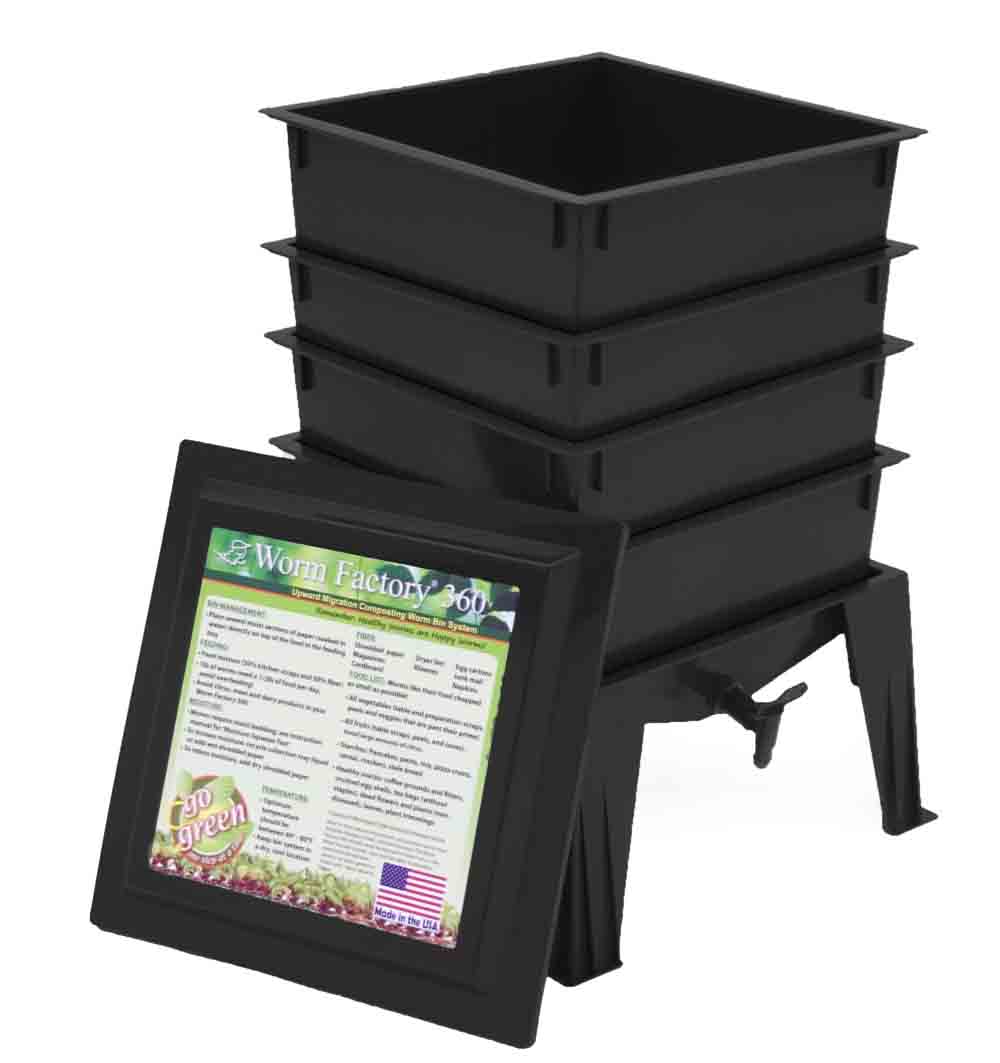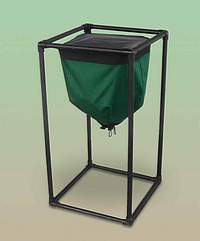

|
Worm Tea Vs Leachate Not everyone is able to read everything at Worm Farming Revealed.com. That is one of the reasons why I deliver this newsletter to you. To give you the latest page update and any helpful tips I come across along the way. So read, learn and enjoy. If information in my newsletters or website has helped you please let me know by writing me a testimonial at the contact us page and I'll post it on the website. In this issue of the Poop Scoop I am going to talk about the differences between worm tea and how it is completely different than leachate. I see it everywhere on the internet and in videos and even some companies trying to say that leachate is worm tea. So this is why I want to cover this topic in a greater depth so that you can clearly understand what worm tea and leachate is and how to properly use it on your plants and in your gardens. First of all let's go over the two definitions (in my own words) so you can identify what I am talking about. Leachate - The liquid run off that settles at or below the vermicompost or worm castings. This is a form of "Seeping" Worm Tea - The end result or product of suspending worm castings for extracting in highly oxygenated water. This is a form of "Steeping" Alright, so if you noticed not only do these words have different meanings, but they are entirely two different processes. One is "seeping" and the other is "steeping" in which one can only occur by human intervention.
I'll admit it. When I first started my own worm bin I was in love with the fact that I could fill the bin almost to the top with straight tap water and collect all the leachate at the bottom to feed my plants and no, the worms did not like taking a bath once a month. I soon found out that this would not work. My plants, especially the tomatoes, succumbed to diseases. So, what is it about leachate that is potentially not good for the plants? Leachate contains phytotoxins (toxins that can harm plants). Some of these toxins are created by bacteria. Yes, not all bacteria are good. When a worm farm becomes anaerobic (lack of oxygen) it creates chaos, or when there is too much nitrogen rich food, the good bacteria are at war with the bad bacteria. Ultimately if you don't keep the conditions right for the good bacteria then they will lose. in any case though, every worm bin has good and bad microbes no matter how well you take care of you worm farm. This is ok of course, as long as the good ones out number the bad ones. Some leachate can contain harmful pathogens. Landfills always lay down a barrier underneath the compost to keep the leachate from entering into lakes and streams. When you ad fresh food to the worm bin it starts to break down and goes into a mesophilic process. A mesophile is an organism that thrives in temperatures between 70-104 degrees Fahrenheit. So the bin heats up quite a bit allowing these organisms to multiply exponentially until it can cool back down. Any temperature above this range would then be called a thermophilic process. "Thermophiles" begin to multiply between 105-170 degrees Fahrenheit. These are good temperatures to have in a compost pile outside. It kills off harmful pathogens and unwanted seeds. The worms move through the compost allowing for greater aeration bringing in more oxygen to the compost. This allows the good organisms to thrive, but Generally, during these higher temperatures, the worms stay away from the decaying matter until it has cooled and stabilized enough to allow the worms back in. This instability is usually accompanied by a smelly or foul odor. This is a great sign that indicates that the bin in that particular area is teaming with the bad organisms until they have a chance to pass through the gut of a worm. So when you seep water through the bin during these unstable conditions to feed directly to your plants you are gambling with a set of cards you haven't even seen.
2. Now I'll give you the good news, Worm Tea Worm Tea is its most popular name along with vermitea, vermicompost tea (which I'm not sure why people use that name), worm poop tea, liquid gold, vermicast tea, worm castings tea, worm liquor, Worm "liqueous" (I don't even think that's a word), and here's a good one "vermicastings aqueous extracts" and on and on. Worm tea is created by either suspending a porous bag full of worm castings or simply dumping the castings into a container of clean chemical free water. Molasses (a food source) is then added to the water as a catalyst to stimulate growth. Then last, an air pumping system is installed to increase an aerobic (oxygenated) environment for the inoculation of the microorganisms. Worm tea is beneficial in so many ways. From the root all the way up to the ends of the leaves. Worm tea contains all the helpful microorganisms that are found in worm castings like:
Did you know? The purpose behind creating worm tea is to speed up the growth rate of these microbes and to multiply their numbers exponentially. One reason for applying the tea to your plants is rapid absorption by the plant unlike the castings which is a time released process. Just like you and I would take supplements in a liquid form, the plants receive its supplements in a liquid form as well for faster intake. When you spray or pour the tea on the soil not only are you feeding the plant, but you help the soil increase in beneficial microbes, thus crowding out the bad microbes where there are just too many good ones to compete against. It has been proven by universities, such as Ohio Sate, and in the field, and by gardeners like you and I that the tea along with the castings can significantly increase plant growth, as well as crop yields, in the short term (a season) and especially the long term over a period of seasons. along with these great benefits come a boost in the plants own immune system to be able to resist parasites like the infamous aphid, and tomato cyst eelworm and root knot nematodes. Plants produce certain hormones (like the jasmonic hormone) that insects find distasteful. It also helps it to resist diseases such as Pythium and Rhizoctonia. When sprayed on leaves and foliage the bad disease causing microbes are again out numbered and cannot populate to the levels of taking over a single plant. The tea also aids the plant in creating the "cuticle", the waxy layer on top of their epidermis. This waxy surface protects the leaves from severe elements (drying out) and reduces attacks by certain harmful microorganisms and insects. learn how to make worm tea for yourself So there you have it. These are the differences between "leachate" and "worm tea". So the next time you turn on the spigot and collect the juice at the bottom of your worm bin think twice about where you want to put the leachate. You have no idea of what might be in the mysterious liquid, but you can be 100% sure of what's in the the LIQUID GOLD. Hope this addition of the Poop Scoop has been helpful. Till then see you next issue and always remember, Happy worm farming, P.S. I recently added an
About Me page for those of you who would like to get to know me a little better. Sorry so late:.(
|


